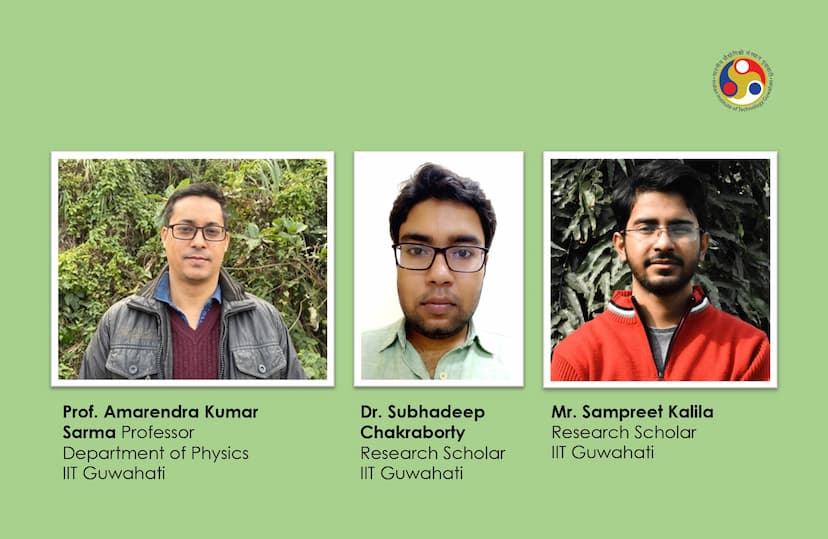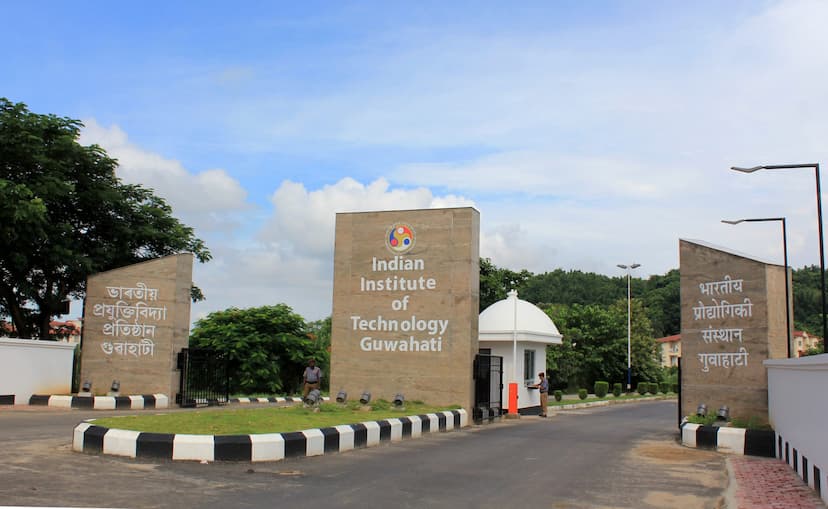IIT Guwahati scientists win great global recognition

IIT Guwahati scientists have made the institution proud once again as they got international recognition for their contribution to ‘Quantum Engtanglement.’
IIT Guwahati scientists led by Professor Amarendra Kumar Sarma from Department of Physics and his research scholars Dr. Subhadeep Chakraborty and Mr. Sampreet Kalila have studied the workings of quantum entanglement.


IIT Guwahati scientists win great global recognition
IIT Guwahati scientists summarised their understanding in an invited review article in a prestigious research journal ‘AVS Quantum Science’ which is published by American Institute of Physics.
The article of IIT Guwahati Scientists is published as a feature article in the journal this month.
Professor Sarma who is one among the IIT Guwahati scientists was invited to write a review article for the journal in recognition to his seminal works in quantum optics.

IIT Guwahati scientists published their research articles in the area of quantum optics in various prestigious journals such as Physical Review A, Journal of Optical Society of America B, Annals of Physics, Scientific Reports.
Couple of recent works by Professor Sarma who led the IIT Guwahati scientists are available on the links given below:
‘https://doi.org/10.1103/PhysRevA.100.063846’

‘https://doi.org/10.1364/JOSAB.34.001503’
‘https://doi.org/10.1016/j.aop.2018.03.007’
‘https://doi.org/10.1038/s41598-018-32743-1’
‘https://doi.org/10.1103/PhysRevA.102.043719’

Quantum physics, the field of Science that has ridden on the shoulders of such giants as Niels Bohr, Werner Heisenberg, and Erwin Schrödinger, continues to be researched by labs all over the world, to help unravel the workings of the universe, say IIT Guwahati scientists.
Read More – Most toughest exams in India
This study of subatomic particles and forces forms the basis of the computer chip, the electric current, laser power, and even light from the sun, say the IIT Guwahati scientists.
IIT Guwahati scientists further said one of the most fascinating and perhaps bizarre traits of quantum mechanics is quantum entanglement, the interaction among quantum systems such as subatomic particles, in ways not possible in our larger, perceivable classical world.
When two subatomic particles, like a pair of electrons, are entangled, it is impossible to measure properties of one without affecting the other.
No matter how far they move apart, if one is tweaked, measured, or observed, the other seems to instantly respond, even if the whole world now lies between them.

It is the same phenomenon that baffled even the mind of well-known scientific genius Albert Einstein, said Professor Sarma, who led the team of IIT Guwahati scientists.
That, however, does not make it unreal – numerous experiments have established that entanglement is indeed a real phenomenon in subatomic systems, said Professor Amarendra Kumar Sarma who led the team of IIT Guwahati scientists.
In fact, quantum entanglement is the building block of the second generation of quantum technology such as quantum computation, quantum cryptography, quantum teleportation, and quantum dense coding, added Prof. Sarma who led IIT Guwahati scientists.
Various research groups around the world are working towards understanding quantum entanglement across various subfields.
IIT Guwahati scientists comprising Dr. Sarma and his team works on understanding it in the realm of cavity optomechanics, the interaction between light and mechanical objects at low-energy scales.
Speaking further Professor Sarma said in simplified terms, a cavity optomechanical system refers to a set of mirrors where one of the mirrors is fixed while the other one is slightly movable.

‘Such systems provide a universal tool to achieve quantum control of mechanical motion.’
But beyond application, the research helps to understand the boundary between classical and quantum physics, said Professor Sarma who led the team of IIT Guwahati scientists.
‘We have come up with various practical schemes to enhance quantum correlations in optomechanical systems.’
Apart from entanglement we are looking into the aspects of qubit transfer, photon and phonon blockade also in such systems owing to their tremendous applications in quantum communication and information sciences,’ Dr. Sarma who is the lead among IIT Guwahati scientists.
More recently, scientists have addressed the issue of ‘entanglement sudden death’ under the influence of a local noisy environment, a stumbling block encountered by scientists a decade ago.
The researchers have proposed a scheme to tackle such shortcomings using an optomechanical platform.
The scientists have published their work in prestigious journals of Physics.
The recently featured article of the scientists in AVS Quantum Science has provided them the impetus for more rigorous research in unravelling the mysteries of quatum entanglement and other quantum optical phenomena.
S Vishnu Sharmaa now works with collegechalo.com in the news team. His work involves writing articles related to the education sector in India with a keen focus on higher education issues. Journalism has always been a passion for him. He has more than 10 years of enriching experience with various media organizations like Eenadu, Webdunia, News Today, Infodea. He also has a strong interest in writing about defence and railway related issues.






